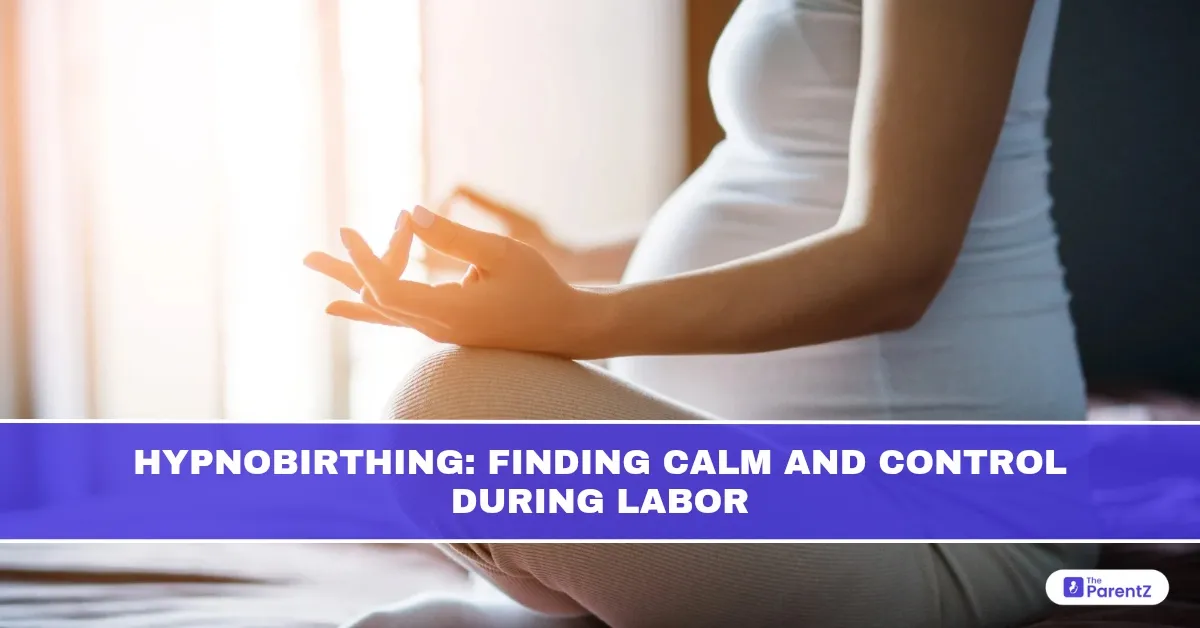The lights are dim. A woman breathes slowly, steadily, her partner by her side. There are no screams, no panic, just focus, breath, and a surprising sense of calm as her baby makes its way into the world.
This isn’t a fantasy birth, it’s an example of hypnobirthing, a childbirth method that’s gaining traction among women who want a more mindful, less fear-driven experience during labor.
In a world where birth is often portrayed as chaotic and painful, hypnobirthing offers a radically different vision: one where the birthing person is calm, in control, and empowered.
But what exactly is hypnobirthing? Is it safe? And can it really make a difference in how you experience labor?
Let’s explore the facts, the process, and the potential benefits of hypnobirthing.
What Is Hypnobirthing?
Hypnobirthing is a childbirth preparation method that uses self-hypnosis, breathing techniques, visualization, and relaxation to reduce fear and pain during labor.
The approach is rooted in the idea that fear leads to tension, and tension leads to pain—a concept known as the “fear-tension-pain cycle.” By learning to break this cycle, women can approach labor with confidence, allowing the body to function more efficiently and comfortably.
Hypnobirthing doesn’t mean you’re “put under” or unaware. Instead, you’re deeply relaxed, alert, and focused—similar to how one might feel during meditation or yoga.
Where Did Hypnobirthing Come From?
The concept is based on the work of Dr. Grantly Dick-Read, a British obstetrician who, in the 1930s, observed that women who were calm and unafraid often experienced easier labors. He wrote about this in his book Childbirth Without Fear.
Modern hypnobirthing was later popularized by Marie Mongan, who created the Mongan Method HypnoBirthing in the late 1980s. Since then, variations of the technique have spread globally, supported by books, apps, classes, and doula services.
How Does Hypnobirthing Work?
Hypnobirthing involves a few core components:
1. Deep Breathing Techniques
Controlled breathing calms the nervous system, maintains oxygen flow to the uterus and baby, and reduces the body’s stress response.
- “Surge breathing”: For early labor contractions
- “J breathing”: Used during the pushing phase
- “Calm breathing”: Maintains a steady rhythm throughout labor
2. Positive Affirmations
Statements like “My body was made to birth” or “Each surge brings me closer to my baby” are used to reframe labor positively and reduce fear.
3. Visualization
Participants often imagine a peaceful place, blooming flower, or opening balloon—symbolizing the cervix opening naturally and easily.
4. Self-Hypnosis
Through guided scripts or audio tracks, women enter a state of deep relaxation where they feel centered and in control, even during contractions.
5. Education About Physiology
Understanding how the uterus works, what hormones do, and what to expect during labor helps replace fear with trust in the body’s natural processes.
What Are the Benefits?
Many women and healthcare providers report a range of physical and psychological benefits from hypnobirthing.
1. Reduced Pain Perception
Studies show that hypnobirthing can lower the sensation of pain, sometimes enough to avoid or delay epidural use.
2. Shorter Labor
Some research indicates shorter average labor durations, particularly during the first stage (dilation phase), due to reduced muscular tension.
3. Fewer Medical Interventions
Women who practice hypnobirthing may have:
- Lower rates of epidural use
- Fewer inductions
- Reduced cesarean section rates
4. Improved Birth Satisfaction
A calm, informed, and supported birth can leave women feeling empowered and less traumatized, even when interventions are needed.
5. Supportive Role for Partners
Hypnobirthing often includes the birth partner, giving them practical ways to help with breathing, affirmations, and emotional support.
Is There Scientific Evidence?
While more large-scale, randomized trials are needed, several smaller studies support hypnobirthing’s effectiveness:
- A 2016 review in the Journal of Clinical Hypnosis found that hypnosis-based childbirth preparation could reduce pain perception and medical interventions.
- A 2020 study published in BMC Pregnancy and Childbirth reported greater birth satisfaction and less fear among women using hypnobirthing techniques.
- The Cochrane Library acknowledges that hypnosis may improve outcomes when combined with other birth prep strategies.
However, it’s important to note that results vary. Hypnobirthing is not a guarantee of a pain-free or intervention-free birth, but many women find it gives them tools to manage labor with more peace and control.
Is Hypnobirthing Right for Everyone?
Hypnobirthing is suitable for most healthy pregnancies, including:
- First-time parents
- VBAC (Vaginal Birth After Cesarean) candidates
- Women with anxiety about birth
- Those hoping for unmedicated labor
However, it’s still important to remain flexible. Hypnobirthing is a mindset and toolkit, not a rigid plan. If your birth journey includes interventions, hypnobirthing techniques can still help reduce stress and improve your experience.
How to Learn Hypnobirthing
There are many ways to learn:
1. Group or Private Classes
Taught by certified hypnobirthing practitioners, often over 4–6 weeks. Classes typically involve both education and practice exercises.
2. Online Courses
Useful for those with scheduling constraints or in-person limitations. Many come with downloadable meditations and affirmations.
3. Books and Audio Programs
Popular titles include:
- HypnoBirthing: The Mongan Method by Marie Mongan
- Mindful Hypnobirthing by Sophie Fletcher
4. Apps
Apps like Hypnobirthing: Calm Birth, GentleBirth, or Expectful offer guided tracks and daily practice tools.
Combining Hypnobirthing with Medical Support
You don’t have to choose between hypnobirthing and medical care—they can work together.
Tips for Integration:
- Inform your care team of your preferences and techniques.
- Write a birth plan that includes hypnobirthing approaches.
- Practice regularly before labor, just as you would train for a marathon.
- Stay open-minded. If interventions become necessary, your hypnobirthing mindset can help you stay calm and engaged.
Some hospitals and midwives are even trained in hypnobirthing or offer supportive environments tailored to its principles.
Conclusion: Reclaiming Calm and Confidence
Birth is one of the most intense, transformative events in a person’s life—and for too long, it’s been associated only with pain, fear, and unpredictability. Hypnobirthing offers a counter-narrative: one where you’re the center, not just the patient. One where calm, breath, and intention guide the process, whether it unfolds at home, in a hospital, or in an operating room.
While no one can promise a perfect birth, hypnobirthing empowers you with tools to stay grounded, informed, and connected to your body. For many, it’s a path not just to a better birth—but to a deeper trust in themselves.









Be the first one to comment on this story.